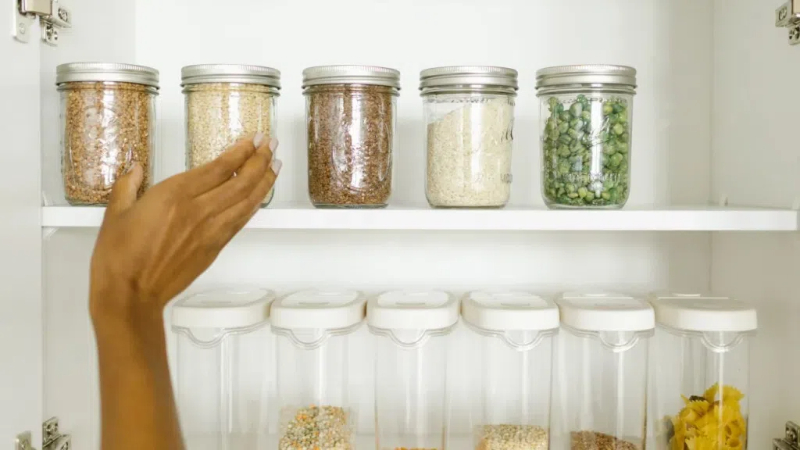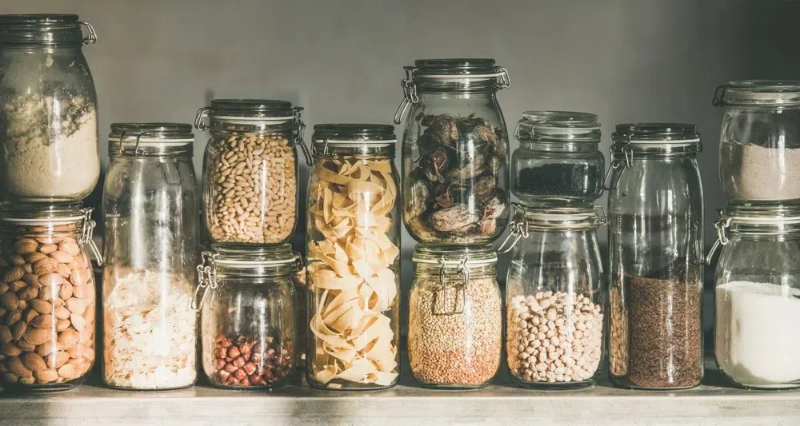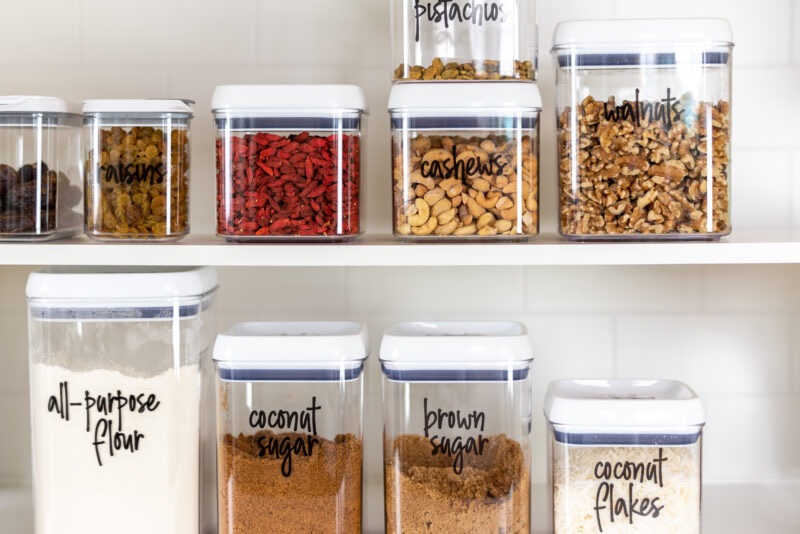
Content Menu
● Why Proper Storage Matters
● Key Factors in Storing Dried Foods
>> 1. Cooling Before Packaging
>> 2. Conditioning Dried Fruit
>> 3. Choosing the Right Containers
>> 4. Removing Air
>> 5. Portioning
>> 6. Optimal Storage Conditions
>> 7. Maintaining a Clean Storage Area
>> 8. Labeling and Organization
>> 9. Monitoring Humidity and Temperature
>> 10. Additional Tips for Food Service Businesses
● Drying Equipment
>> 1. Food Drying Device for Food Processing
>> 2. Box-Type Food Low-Temperature Dryer
● Understanding Food Dehydration and Freeze Drying
>> Food Dehydration
>> Freeze Drying
>> Nutritional Value and Quality Preservation
>> Choosing the Right Method
● Practical Tips for Using Your Food Drying Machine
● Storing Specific Types of Dried Foods
>> Dried Fruits
>> Dried Vegetables
>> Dried Meats
>> Herbs and Spices
● Troubleshooting Common Storage Issues
● Conclusion
● FAQ
>> 1. What is the ideal temperature for storing dried foods?
>> 2. Can I use plastic bags for long-term storage of dried foods?
>> 3. How important is it to remove air from the storage container?
>> 4. What should I do if I see moisture inside my storage containers?
>> 5. How often should I check my stored dried foods?
● Citations:
Drying food is an age-old preservation technique that remains incredibly relevant today. Whether you're a home enthusiast or a commercial producer, mastering the art of storing dried foods properly after using your food drying machine is crucial. This comprehensive guide provides best practices to ensure your dried foods remain flavorful, nutritious, and safe for consumption.

Why Proper Storage Matters
Proper storage is vital for several reasons:
- Extending Shelf Life: Correct storage dramatically increases how long your dried foods last.
- Maintaining Quality: It preserves the taste, texture, and nutritional value of your products[5].
- Preventing Spoilage: Proper methods prevent mold growth and bacterial contamination.
- Reducing Waste: Effective storage means less food waste and better use of resources[3].
Key Factors in Storing Dried Foods
1. Cooling Before Packaging
Before you even think about packing your dried goodies, ensure they are completely cool to the touch. This is a step many overlook, but it's essential. When the food is fully dried, it should be completely cool before storing (about 15-30 minutes)[1]. If the food is still warm, residual moisture will condense inside the storage container, creating a breeding ground for mold and bacteria.
2. Conditioning Dried Fruit
If you're drying fruit, conditioning is a step you shouldn't skip.
How to Condition:
1. Place the dried fruit loosely in jars.
2. Shake the jars once a day for about 10 days.
3. Observe for any signs of moisture. If moisture appears, return the fruit to the dehydrator for further drying[1].
Conditioning ensures uniform dryness across all pieces of fruit, preventing spoilage[1].
3. Choosing the Right Containers
Selecting the appropriate storage container is paramount. Here are some options:
- Mylar Bags: Excellent for long-term storage due to their low permeability to oxygen and moisture.
- Glass Jars: A good option for shorter storage periods, provided they are airtight[1].
- Vacuum Sealers: These remove air from the packaging, significantly extending shelf life and protecting against moisture and mold.
Vacuum Sealing
A vacuum sealer in action, ensuring an airtight environment for dried foods.
- Airtight Containers: Suitable for regular use where the contents will be consumed relatively quickly[1].
What to Avoid:
- Freezer Bags: Not ideal for long-term storage as they are permeable to oxygen and moisture.
- Regular Sandwich Bags: Similar to freezer bags, they don't offer sufficient protection[1].
4. Removing Air
Air is the enemy of dried foods. Oxygen and moisture in the air can degrade the quality of your products[1]. Vacuum sealing is one of the best methods to remove air. For other containers, try to minimize the air inside before sealing[1].

5. Portioning
Consider how you plan to use the dried food. Packing foods into smaller, separate portions offers several advantages:
- Prevents Waste: You only expose what you need to air and moisture.
- Convenience: Easier to transport and share.
- Space Efficiency: Smaller packages are easier to store[3].
6. Optimal Storage Conditions
The environment where you store your dried foods is crucial.
- Temperature: Aim for a cool environment, ideally below 15°C (59°F). All packaged dried foods should be stored in a cool, dry place[8].
- Darkness: Exposure to light can degrade dried foods[1]. Store your containers in a dark cupboard or drawer.
- Dryness: Minimal humidity is essential. Cement walls and floors are often damp. Storage containers should not be placed directly on the floor or against basement or cellar walls[1].
7. Maintaining a Clean Storage Area
Cleanliness and organization are key to preventing pests and maintaining food safety[1].
- Regular Cleaning: Regularly clean your storage areas to avoid attracting pests[1].
- Elevate Items: Keep food items at least 15 centimeters (6 inches) off the floor[1].
- Ventilation: Ensure shelves are away from walls to allow for ventilation[1].
8. Labeling and Organization
Proper labeling ensures you use older products first and helps maintain quality[1].
- Labeling: Label all boxes and containers with the contents, date of drying, and expiry dates[1].
- FIFO (First In, First Out): Older items should be placed in front of newer ones to ensure they are used first[1].
- "To Use" List: Keep a list of items that need to be used to minimize waste[1].
9. Monitoring Humidity and Temperature
- Thermometers: Place thermometers in storage areas to monitor temperature.
- Humidity Gauges: Use humidity gauges to keep track of humidity levels.
- Record Keeping: Regularly record temperature and humidity to ensure conditions are optimal.
10. Additional Tips for Food Service Businesses
If you operate a food service business, consider these additional guidelines:
- Training: Ensure all staff are trained in proper food storage procedures[1].
- Original Packaging: Store food in its original packaging as much as possible[1].
- Airtight Containers: Transfer opened packages into airtight containers with clear labels[1].
Drying Equipment
The quality of the drying equipment is just as crucial as the storage. Here are two examples of drying equipment from China:
1. Food Drying Device for Food Processing
This device includes a box body with an insulation layer between the box body and the inner cavity. The top of the inner cavity is equipped with a heating component connected to a cooling device. The cooling device is connected to a temperature and humidity controller, which is connected to a motor through a control module. The left side of the box body is equipped with an air-drying device, and the bottom of the air-drying device is connected to a conveying device. The bottom of the conveying device is equipped with a recycling tank that extends to the bottom of the inner cavity.
2. Box-Type Food Low-Temperature Dryer
This energy-saving box-type food low-temperature dryer ensures that the nutritional components of raw materials, such as protein and fat, do not undergo denaturation, and ensures the original nutritional value of the food. It includes an electrical control cabinet that controls the operation of the dryer, as well as a cloth box, material conveying device, and dehumidification device. The front part of the dryer is the drying area, and the rear part is the cooling area. The drying area is equipped with low-temperature and low-pressure hot airflow, with a working temperature between 60°C and 70°C. The cooling area is equipped with cooling airflow, and the dehumidification device is equipped with dehumidification pipes.
Understanding Food Dehydration and Freeze Drying
Food dehydration and freeze-drying are both popular methods for preserving food, but they differ significantly in their processes and results[3]. Understanding these differences can help you choose the best method for your needs.
Food Dehydration
Food dehydration involves removing moisture from food by using heat and airflow[3]. This process reduces the water content, inhibiting the growth of bacteria, yeast, and mold, thereby extending the shelf life of the food[3].
Process:
1. Preparation: The food is cleaned, cut into pieces, and arranged on trays[4].
2. Drying: The dehydrator circulates warm air around the food, gradually removing moisture[3]. Vevor Dehydrators are known for their custom settings which prevent heat-induced vitamin breakdown[3].
3. Monitoring: The drying time depends on the type of food, its thickness, and the dehydrator's settings[4].
Advantages:
- Cost-Effective: Dehydrators are generally more affordable than freeze dryers[3].
- Energy Efficient: They typically consume less energy[3].
- User-Friendly: Dehydrators are easy to operate and require minimal maintenance[3].
Disadvantages:
- Nutrient Loss: Some heat-sensitive nutrients may be lost during the drying process[3].
- Texture Change: The texture of the food can become tougher and chewier[3].
Freeze Drying
Freeze-drying, also known as lyophilization, is a more advanced method of food preservation that involves freezing the food and then reducing the surrounding pressure to allow the frozen water to sublimate directly from the solid phase to the gas phase[2].
Process:
1. Freezing: The food is frozen to a very low temperature[2].
2. Sublimation: The frozen water is then removed by sublimation in a vacuum chamber[2].
3. Sealing: Once dried, the food is sealed in airtight packaging, often with an oxygen absorber[2].
Advantages:
- Superior Nutrient Retention: Freeze-drying retains most of the original nutrients in the food[5].
- Excellent Texture: The food retains its original texture and shape[3].
- Longer Shelf Life: Freeze-dried foods can last for many years when stored properly[5].
Disadvantages:
- High Cost: Freeze dryers are expensive to purchase and operate[3].
- Energy Intensive: The process requires significant energy input[3].
- Complexity: Freeze-drying is more complex than dehydration and may require more technical knowledge[3].
Nutritional Value and Quality Preservation
Both dehydration and freeze-drying aim to lock in vitamins and minerals[3]. However, freeze-drying excels in protecting delicate nutrients[5]. Vevor's dehydrators minimize overall nutrient loss and preserve flavor through gentle airflow and precise temperature control[3].
Choosing the Right Method
The choice between a food dehydrator and a freeze dryer depends on your priorities and needs[3].
- For Long Shelf Life and Superior Nutrient Retention: Freeze-drying is the preferred choice[5].
- For Cost-Effectiveness and Ease of Use: Dehydration is a practical option[3].
Practical Tips for Using Your Food Drying Machine
To maximize the efficiency and effectiveness of your food drying machine, consider these practical tips:
1. Pre-treat Foods: Blanching vegetables or pre-treating fruits with lemon juice can help preserve color and prevent spoilage[2].
2. Cut Foods Uniformly: Consistent slice thickness ensures even drying[4].
3. Load Trays Properly: Avoid overcrowding the trays to allow for proper air circulation[4].
4. Rotate Trays: Rotate trays periodically during the drying process to ensure even drying[4].
5. Monitor Moisture Levels: Check the moisture levels of the food regularly to prevent over-drying or under-drying[1].
Storing Specific Types of Dried Foods
Different types of dried foods require slightly different storage approaches. Here are some guidelines for specific categories:
Dried Fruits
- Conditioning: As mentioned earlier, conditioning is crucial for fruits to equalize moisture levels[1].
- Storage: Store in airtight containers in a cool, dark, and dry place[1].
Dried Vegetables
- Blanching: Blanching before drying helps preserve color and nutrients[2].
- Storage: Store in airtight containers with a desiccant to absorb any residual moisture[1].
Dried Meats
- Curing: Cure meats properly before drying to prevent bacterial growth[1].
- Storage: Store in vacuum-sealed bags in the refrigerator or freezer for longer shelf life[1].
Herbs and Spices
- Drying: Dry herbs and spices until they are brittle[3].
- Storage: Store in airtight containers away from light and heat to preserve their flavor[3].
Troubleshooting Common Storage Issues
Even with the best storage practices, issues can arise. Here are some common problems and how to address them:
1. Mold Growth: Discard any food that shows signs of mold[1]. Ensure foods are thoroughly dried before storing[1].
2. Insect Infestation: Inspect stored foods regularly for signs of insects[1]. Store foods in airtight containers to prevent infestations[1].
3. Loss of Flavor: Store foods properly in airtight containers away from light and heat to maintain flavor[3].
4. Rehydration: If foods become rehydrated, re-dry them in the dehydrator and ensure proper storage[1].
Conclusion
Mastering the storage of dried foods is essential for preserving their quality, extending their shelf life, and ensuring food safety. By following these best practices—cooling, conditioning, selecting appropriate containers, removing air, controlling storage conditions, and maintaining cleanliness—you can enjoy the fruits (and vegetables, and meats) of your drying labor for months to come. Whether you're a home cook or a commercial food producer, these guidelines will help you minimize waste and maximize the value of your dried products.

FAQ
1. What is the ideal temperature for storing dried foods?
The ideal temperature for storing dried foods is below 15°C (59°F). Lower temperatures help to slow down degradation and extend shelf life[8].
2. Can I use plastic bags for long-term storage of dried foods?
No, it's best to avoid plastic bags like freezer bags or sandwich bags for long-term storage[1]. They are permeable to oxygen and moisture, which can degrade the quality of the food. Mylar bags or glass jars are better options[1].
3. How important is it to remove air from the storage container?
Removing air is very important[1]. Oxygen and moisture in the air can cause dried foods to spoil. Vacuum sealing is an effective method, but even minimizing air in other types of containers can help[1].
4. What should I do if I see moisture inside my storage containers?
If you notice moisture inside your storage containers, it indicates that the food wasn't completely dry before storage or that the container isn't airtight[1]. Remove the food, re-dry it if necessary, and ensure you're using an airtight container[1].
5. How often should I check my stored dried foods?
It's a good practice to check your stored dried foods every few weeks, especially in the beginning, to ensure there are no signs of spoilage or moisture[1]. Regular monitoring helps to catch any issues early and prevent food waste[1].
Citations:
[1] https://jingyan.baidu.com/article/4f34706e3ea775e387b56d17.html
[2] https://hollandgreenscience.eu/zh-CN/%E9%80%89%E6%8B%A9%E5%AE%8C%E7%BE%8E%E5%86%B7%E5%86%BB%E5%B9%B2%E7%87%A5%E6%9C%BA%E7%9A%84%E7%BB%88%E6%9E%81%E6%8C%87%E5%8D%97/
[3] https://www.vevor.com/zh-CN/diy-ideas/food-dehydrator-vs-freeze-dryer/
[4] https://blog.sina.com.cn/s/blog_65e7f1ac01015c6s.html
[5] https://hollandgreenscience.eu/zh-CN/%E5%AE%B6%E7%94%A8%E5%B0%8F%E5%9E%8B%E5%86%B7%E5%86%BB%E5%B9%B2%E7%87%A5%E6%9C%BA%E7%BB%88%E6%9E%81%E6%8C%87%E5%8D%97/
[6] https://patents.google.com/patent/CN110772122A/zh
[7] https://patents.google.com/patent/CN113048780A/zh
[8] https://useandcares.hamiltonbeach.com/files/840306300.pdf











